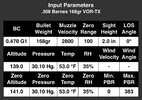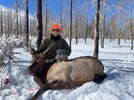np307
Happy to be here.
Okay so this fall I will be going out West for an elk hunt. My maximum distance is 400 yds so we aren't dealing with anything extreme here but I wanted to check in here and see if anyone had tips for the shot process. Myself and a buddy both have tags and will be shooting identical loads, so that simplifies things a little bit.
The process that I was thinking is that the shooter calls the distance, spotter gives the adjustment, shooter dials and takes the shot.
But the one flaw in my plan is the case of an animal that is continuing to move. In that case it seems ideal for the spotter to be calling both distance and adjustment on the fly. The only hesitation with that is it seems (to my uneducated mind) that it will be faster to split calling distance and adjustment.
Its also possible that I'm completely off on how this should go. Any tips for us to work on over the next couple months?
The process that I was thinking is that the shooter calls the distance, spotter gives the adjustment, shooter dials and takes the shot.
But the one flaw in my plan is the case of an animal that is continuing to move. In that case it seems ideal for the spotter to be calling both distance and adjustment on the fly. The only hesitation with that is it seems (to my uneducated mind) that it will be faster to split calling distance and adjustment.
Its also possible that I'm completely off on how this should go. Any tips for us to work on over the next couple months?




